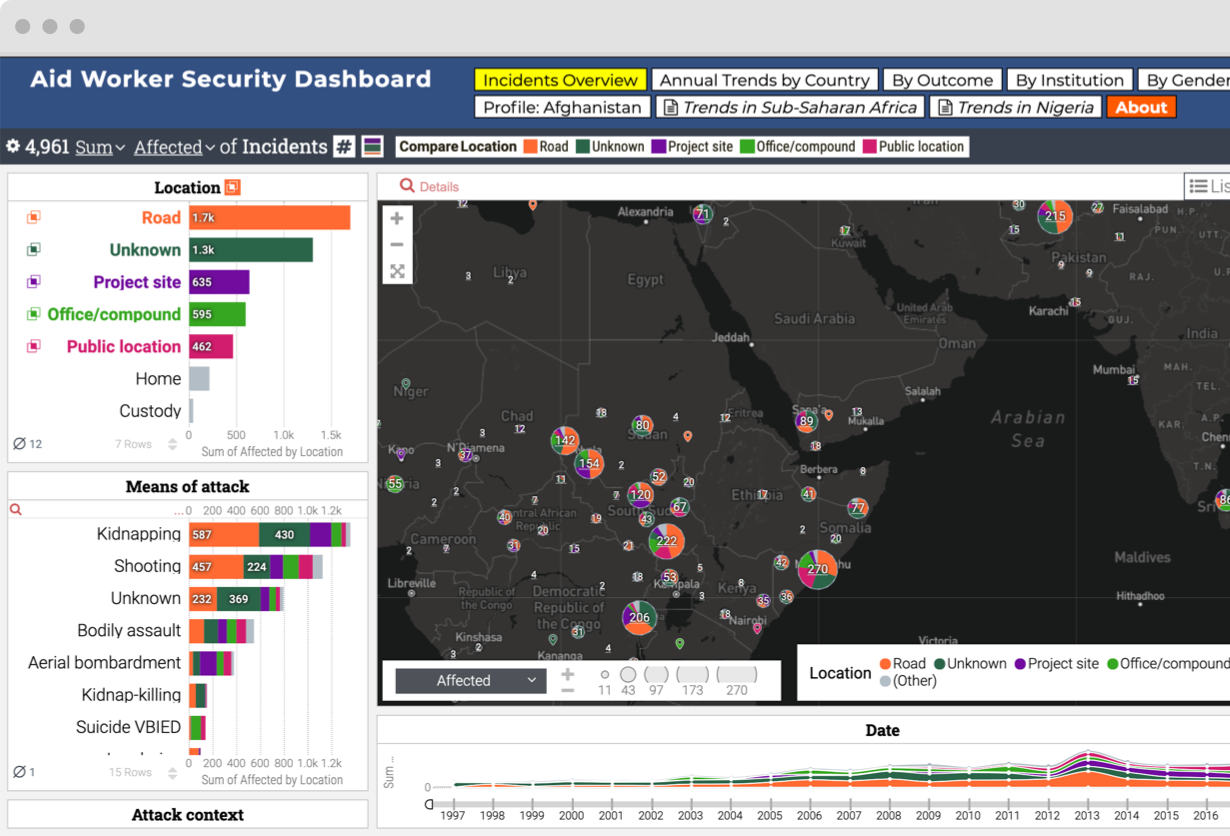Exploratory Analysis Platform for Attacks Against Aid Workers
Keshif created powerful dashboards for interactive visual analytics and exploration of violent attacks against aid workers using the Aid Worker Security Database. Our technical design for visual analytics advances the public presentation and in-depth analysis of this important incident database.
Data from Humanitarian Outcomes, | |
|
|
|
|

Impact
The AWSD dataset* provides an empirical foundation for analysis of the changing security environment for civilian aid operations worldwide. Using our advanced dashboards, conflict and policy analysts can easily track trends, identify key personnel threats, locate geographic hotspots, and perform in-depth analysis and discovery of the data. The dataset has been used to publish various research and public media articles, including Keshif’s analysis published at the Africa Portal.
* Humanitarian Outcomes, Aid Worker Security Database, aidworkersecurity.org
6
THEMATIC DASHBOARDS
2,605
INCIDENTS ANALYZED
79
COUNTRIES
Visual Exploration & Discovery
Discover our techAnalyze incident data from an overview level to a single incident by country, attack location, attack context and timeline using in-sync Keshif charts and point location maps.
Understand country trends over time using time-series dashboards that convert raw incident information to aggregate trends in attack count, people affected, killed, and injured.
Instantly access comparisons across genders, institutions and attack outcomes over different regions and countries in specialized thematic dashboards.
Access country-specific trends that include maps for aggregate data on sub-national level and dynamic point clusters to merge high density local data. Easily query and navigate data and access thousands of data trends instantly.
Related Projects
View all projects
United Nations Resident Coordinator’s Office
Benchmarking Development Risks in Cambodia

START, UMD
Visualizing Pathways to Individual Radicalization in the United States

Institute for Interdisciplinary
